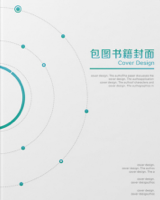Which transport policies increase physical activity of the whole of society? A systematic review
Zukowska, Joanna
Gobis, Anna
Krajewski, Piotr
Show more
Morawiak, Agnieszka
Okraszewska, Romanika
Woods, Catherine B.
Volf, Kevin
Kelly, Liam
Gelius, Peter
Messing, Sven
Forberger, Sarah
Lakerveld, Jeroen
den Braver, Nicole
Bengoechea, Enrique Garcia
PEN consortium
Close more
Zukowska, J (通讯作者),Gdansk Univ Technol, Fac Civil & Environm Engn, Gabriela Narutowicza 11-12, PL-80233 Gdansk, Poland.
Purpose: There is strong evidence of the links between car-dependence and the physical inactivity pandemic. Physical inactivity accounts for 6-10% of major non-communicable diseases. Research consistently shows that unlike passive transport, active transport is associated with higher total daily physical activity (PA). While there are public policies that support PA in transport and, as a result, overall PA levels, the specific quantitative effect of such policies on PA behaviour has not been sufficiently investigated. The aim of this systematic review is to determine the level and type of evidence for policies in the area of transport that contribute to higher PA levels of the whole of society. Methods: Six databases (MEDLINE (Ebsco), SportDiscus, Cinahl, Cochrane library, Web of Science, and Scopus) were searched for key concepts of policy, transport, evaluation and PA. Methodo-logical quality was assessed using standardized tools. The strength of the evidence of policy impact was described based on pre-determined categories of positive, negative, inconclusive or untested. Results: 17 of 2549 studies were included in the data synthesis. The authors identified three main transport policy areas with 51 individual policy actions that had a direct or indirect effect on PA. These were: convenient transport infrastructure development, active travel promotion, and shift of transport mode. More than half of the policy actions identified had a positive effect on PA. Study quality ratings were moderate to good. Conclusions: PA levels can be increased by implementing policies that provide convenient, safe, and connected walking and cycling infrastructures, promote active travel and give strong support to public transport. There is also clear evidence that active travel policies work best when implemented in a comprehensive way. This may include infrastructure and facility improvements as well as educational programmes to achieve substantial shifts towards active modes of travel.
